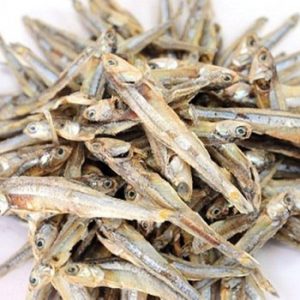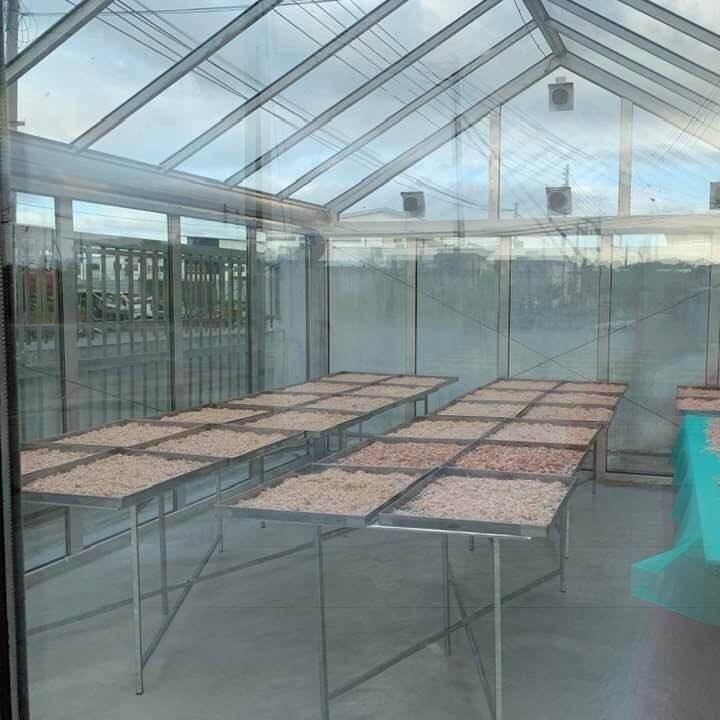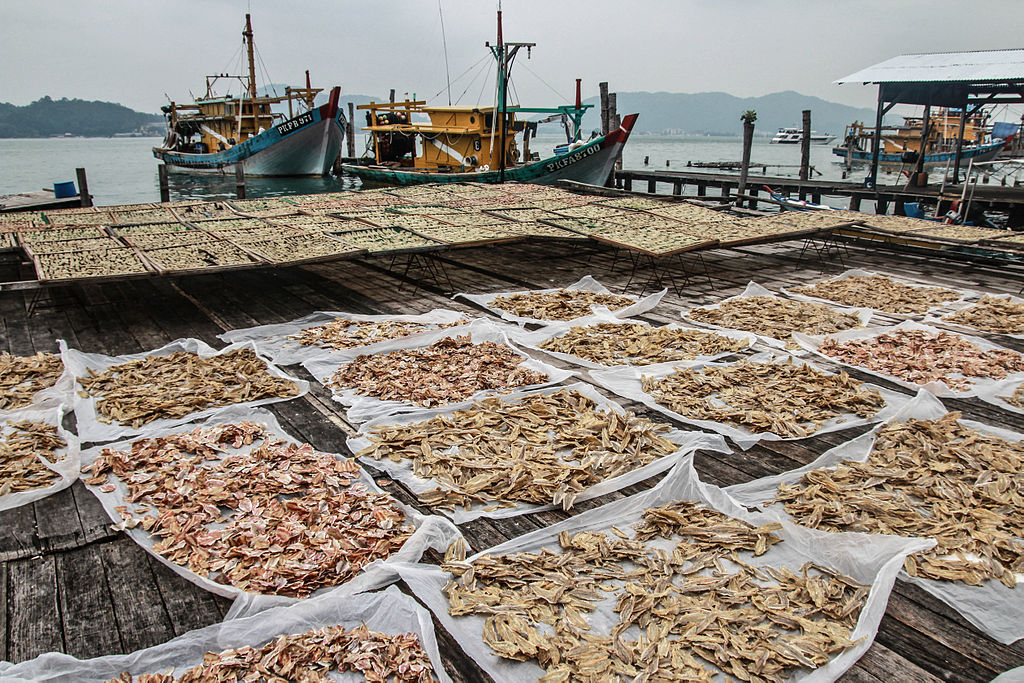Switching from Sun Drying to Greenhouse Solar Drying
Have you ever wondered how anchovies are dried in Southeast Asia? Dried anchovy is a common ingredient used in making fish sauce, fish stock, ad when deep-fried, it is served as a side dish of Malaysia’s heritage food: nasi lemak.
 |
| Delicious dried anchovies |
Seafood products are typically sun-dried in an unenclosed outdoor space. For Southeast Asia and other developing countries that enjoy the tropical climate, tapping on the Sun’s radiant energy all year long for drying is a bliss. The natural radiant light and heat from the Sun is not only a cheap source of energy, but it is also vastly abundant for about 12 hours per day, regardless of the season.
|
|
| Picture of Open Sun Drying of Anchovies near a famous fishing village in Malaysia |
While sun drying remains the most economical method, there are many limitations which are not beneficial to business owners.
If you have been to Pangkor Island, west coast of Peninsular Malaysia, it is common to sight fish drying activity in an open environment under the hot sun. The fishy smell that greets us unpleasantly often attracts flies to be feeding or hovering around the fish – causing an unhygienic impression to tourists.
In addition, conventional open sun drying method is exposed to sudden torrential rain, contamination from fungi, dust, harmful microorganisms, bacteria, excreta of wandering animals, as well as consumption by other predators such as chickens, cats, birds, etc.
Historically, drying or dehydration is the oldest food preservation applied by man. In as early as 12,000 BC, civilisation at the East of the world had been actively sun-drying food before it was then replaced by electrically-powered drying methods such as vacuum drying, freeze-drying, and microwave drying.
However, with the dire situation of climate change and the increase of greenhouse gases from anthropogenic activities, utilising natural and renewable energy is a must. Hence, tapping into solar energy is still a sustainable way forward, but with a slight twist and innovation to the existing open sun drying method.
The New Way of Solar Drying
The concept of solar drying is to overcome the problem from open sun drying practice, it has many years of innovation, the first prototype was a box-shaped housing unit with transparent sunlight cover. Over time, more studies are done and improved versions are designed, including the greenhouse solar dryer. We believe Greenhouse Solar Dryer made of glass is the most effective and affordable as of now.
Greenhouse Solar Dryer is not the imagined greenhouse with a photovoltaic system installed on the roof to convert sunlight into electricity as a source of energy for drying.
Greenhouse solar dryer is an enclosed structure, commonly made of glass, polycarbonate or polyethylene film in entirety (i.e. including the roof and wall of the building). The working mechanism is similar to the greenhouse used in agriculture, except that it is used to dry agricultural or seafood products rather than to grow plants in regulated climatic conditions.
The use of greenhouse dryer hs begun to gain traction as various studies have shown a drop in drying period and improved product quality as compared to the conventional open sun drying method.
From our findings, farmers endured about 50% loss in quantity due to contamination from dirt, dust, and rainfall during open sun drying. Product quality also reduced due to infestation from harmful microorganisms and the development of mycotoxin. The natural nutrients and minerals in natural food which are thermo-sensitive can be degraded due to the exposure of direct sunlight. But with greenhouse solar dryer, the texture, colour, and flavour of food can be retained.
Other comparative research between the open sun and solar drying also found a similar outcome. The total solar ultraviolet radiation recorded in the greenhouse was lower compared to the outdoor environment. Thus, the dried fish was reported to have better colour retention. Another factor contributing to this is also due to lower contamination from dust and dirt when dried in the greenhouse.
The first four fish dried in solar dryer appeared to be better in colour compared to the last four fishes which were dried in open sun condition (source: Metha et al. 2018)
- Reducing the risk of spoilage due to the infestation of microorganisms and fungi
- Preventing contamination from dust, dirt and other wandering animals
- Reducing reliance on labour to keep and store products in case of sudden rain or strong wind
- Reducing operational cost no machinery and a large amount of electricity is required
- Increase operational productivity with a reduced drying period
- Improving product quality with better taste, appearance, healthier and more hygienic/halal
Wanna know more?
Join our Facebook group to learn how you can scale your business with
Greenhouse Solar Dryer
https://www.facebook.com/groups/GreenhouseSolarDryer/
Before you go, I just want to let you know that we are always here to listen to the challenges you faced in drying your food products. We would love to understand your business needs to customise the best Greenhouse for you. Not only that, we will design the best strategy for your company to market your products after you begin using the Greenhouse Solar Dryer.
Wishing you the best of luck in your business. Thanks for reading.
Written by: Tan She Mei, content strategist


Some truly interesting details you have written. Aided me a lot, just what I was searching for :D.
Thank you for your comment Yancy. We wish Solar Dryer will be the next big thing in the renewable industry. Keep in touch.
We are planning to dry chopped cactus pads in a solar greenhouse.
We need an experienced consultant to help us setup this business.
Hi Hisham Farid, yes we can help you with this. Please refer to this link to email or whatsapp us: https://www.greenhousesolardryer.com/contact-us/